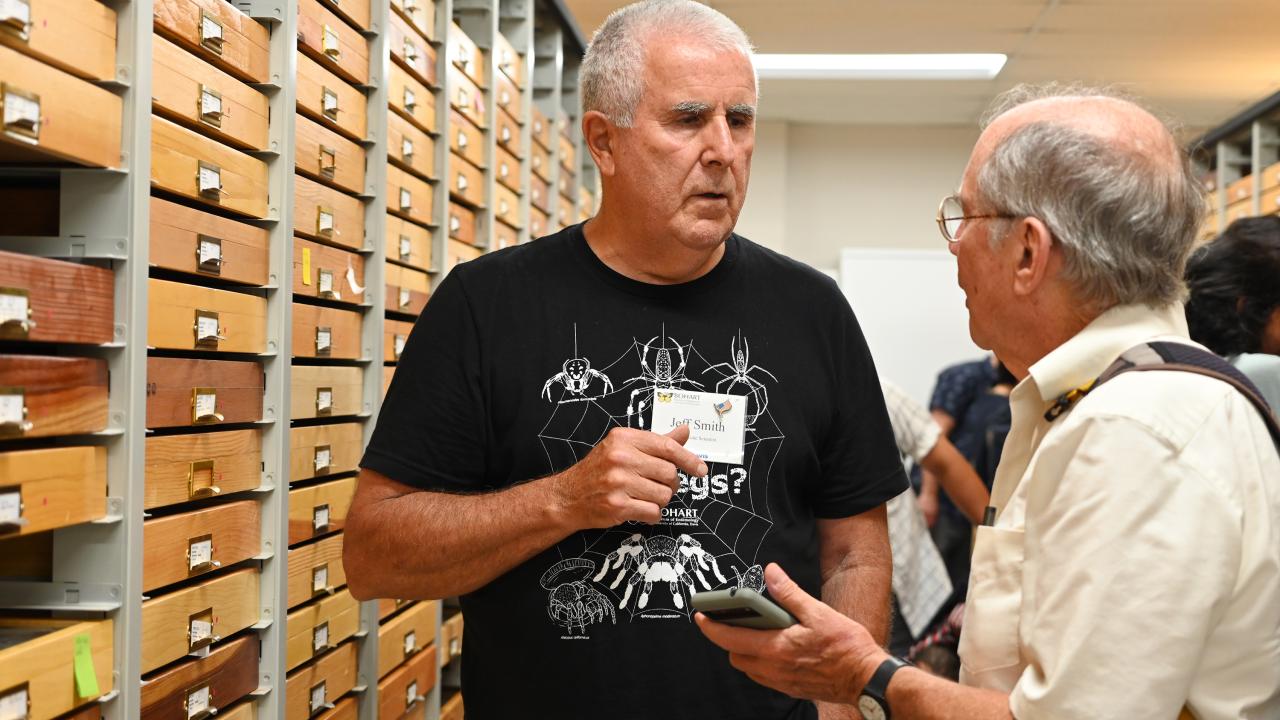
Like a Moth to a Flame: Moth Night on July 20 at Bohart Museum of Entomology
Being Held in Conjunction with National Moth Week

Like a moth to a flame….
The Bohart Museum of Entomology is hosting its annual Moth Night, free and open to the public, on Saturday, July 20.
The event, held in conjunction with National Moth Night, is set from 7 to 11 p.m. in Room 1124 of the Academic Surge Building, 455 Crocker Lane, and outside. A blacklighting display--UV lights on a white sheet--will be set up to draw moths and other night-flying insects.
Jeff Smith, curator of the Lepidoptera collection at the Bohart Museum, said the number of moth and butterfly specimens at the Bohart is about 825,454. Of that number, some 618,750 are moth specimens.
Moths range in size from the huge Atlas moths (10-inch wingspan) to the extremely tiny (4 mm wingspan) leafminer moths.
“Colors range from brown or gray ones with no particular markings to the extraordinary Sunset Moth from Madagascar, with its green, yellow, and violet colors,” said Smith, a 2015 Friend of the College recipient from the UC Davis College of Agricultural and Environmental Sciences. He's served as a volunteer at the Bohart Museum since 1998. “Some moths are perfect mimics of leaves or tree bark, some are brightly colored to advertise their unpalatable nature, while others mimic stinging wasps and bees for their protection. Some moths do not feed at all as the adult moth, while others may have a drinking tube (their proboscis) up to 12 inches long. A few exotic species use this proboscis to drink blood from mammals or the tears of sleeping people. Some moth species are important pollinators of various plants and trees while others, like the Gypsy Moth, are terribly destructive to forests in North America.”
Smith said that "about 18,000 species of butterflies and about 180,000 species of moths are currently named, but hundreds of newly named species are being added every year. It's also believed that we may know of no more than 10-15 percent of the species actually out there, with the small 'micro-Lepidoptera' likely with over 90 percent of the species in the world still unknown. This emphasizes the importance of preserving 'natural'environments so things don't go extinct before we can ever recognize their importance to the Earth and their relationships in their habitats."

The blacklighting display will be set up by John “Moth Man” De Benedictus of Davis and his colleagues.
De Benedictis, a research associate at the Bohart Museum, holds a master's degree in entomology (1998) from UC Berkeley, where he studied with major professor Jerry Powell (1933-2033).
A UC Davis retiree since 2001, De Benedictis worked as a staff research assistant from 1995 to 2001 in the laboratory of medical entomologist Tom Scott, UC Davis Department of Entomology and Nematology.
De Benedictus’ moth collection of some 600 species from the Stebbins Cold Canyon Reserve and 300 species from his backyard in Davis is housed in the Bohart Museum. He discovered a handful of new species on San Bruno Mountain by the San Francisco Airport.” Powell named one for him, Gnorimoschema debenedictisi.
The Bohart Museum is the home of a global collection of 8 million insect specimens. Director of the insect museum is Professor Jason Bond, the Schlinger Endowed Chair, UC Davis Department of Entomology and Nematology, and associate dean for agricultural sciences, UC Davis College of Agricultural and Environmental Sciences. Lynn Kimsey, now UC Davis distinguished emerita, served as the director for 34 years. She retired Feb. 1, but continues her research, and as director of the Bohart Museum Society and as newsletter editor.

